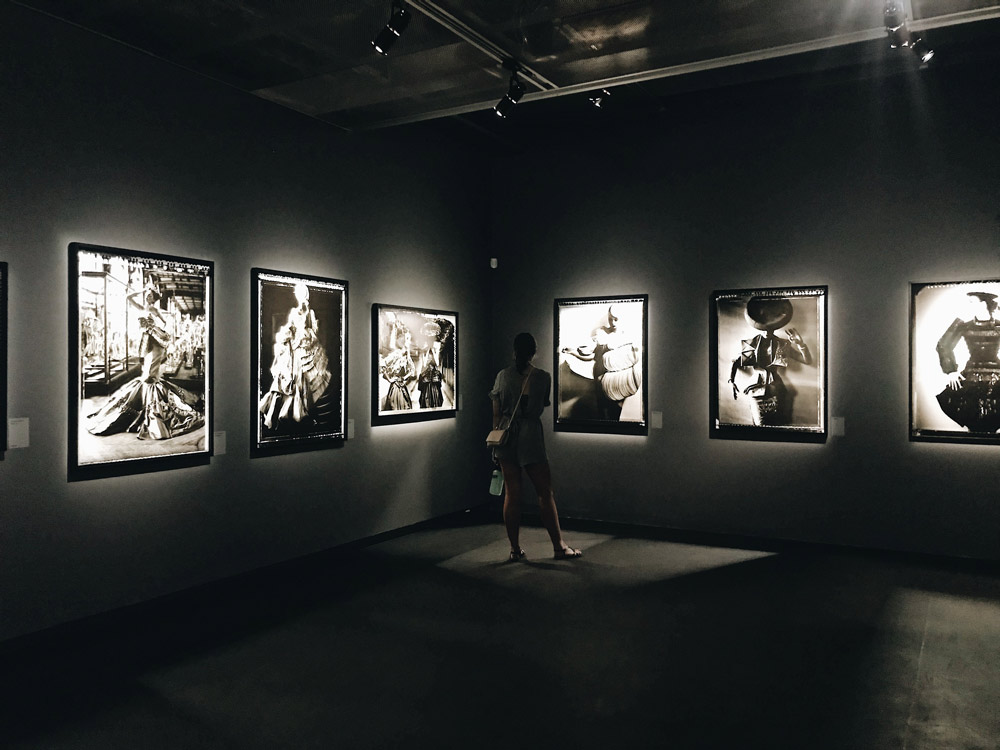Art as an Investment
People, these days, are becoming financially smarter. Instead of just investing in the conventional way, people are now diversifying their portfolios by investing in non-conventional things like jewels, rare coins, antiques, fine wines and artwork. We often think of art investors as filthy rich snobs. But that’s not true anymore. In recent times, art investments have gained quite some popularity. This is because of two reasons. Art investment has become more accessible. People can now invest in art with even $5000 to $10,000. Another reason for this popularity is that some art pieces are being auctioned at millions of dollars. As a result, more and more people are being drawn towards this However, the question remains, is this a viable investment for you? And how can one invest in art? To answer these questions and much more, we have compiled this guide. So, let’s begin.
Understanding The Current Art Market
In recent times, artwork has grown as a significant investment. You might have often heard that a certain piece of art was sold for a record-breaking amount. In 2018, art was declared as the best investment class by the Wall Street Journal as it performed far better than any other investment class. Furthermore, according to a 2019 report by Art Basel and UBS Global Art, global art sales have grown more than $67 million.
According to a Forbes article, art isn’t now limited to being a piece of beauty but it is also becoming a strong market. Another study says that in the past 4 decades, the price of artworks has almost grown by 1000%. According to Arto Baltayan of Money Crasher, this is the reason that art investment has become a huge thing in recent times. Apart from individual investors, many art investment funds have also started to take advantage of this boom.
Chris Muller of Dough Roller says that if we look at some recent art sales, we can find out that some pieces were sold for a very handsome amount. For example, in 2019, a sculpture of a rabbit was sold for a whopping $91.1 million. And it became the most expensive artwork sold by a living artist. Before that, an Amedeo Modigliani masterpiece was sold for $157 million at a Sotheby’s auction. In 2015, an investment billionaire, Ken Griffin, purchased “Interchange”, the abstract painting by Willem De Kooning for $300 million. And there are so many more such examples where a piece of art was sold for an astounding amount of money. Thus, the art market is currently a very lucrative market.
Types of Art
When we think of art, we usually imagine paintings. But art comprises a lot more than just paintings. It also includes drawings, photography, digital, mixed media, sculpture, prints, and even video. Some art purists might not consider certain things art. But that’s a debate for another time. However, the whole discussion comes down to this, who is the creator of the work? An artist or a craftsman? Is it a one-of-a-kind work or is it something that already exists?
Broadly speaking, if someone creates something that is not unique, it isn’t considered art and its creator is called a craftsman rather than an artist. For example, a potter or a blacksmith, or a glassblower. However, if these same people use their skills to create something unique, they might be known as an artist. And it has happened with some people.
Now that we know a piece of art can be much more than just a painting, we need to consider one more thing. And that’s the originality of the work. Here, we would like to mention that in certain cases, even a copy of a piece of art can be valuable. To further understand this, let’s examine the different types of art based on their originality as classified by Arto Baltayan of Money Crasher.
- Original: No prizes for guessing this one. This is the actual work of the artist. And it is generally one of a kind. And the rarer it is, the higher will be the market value. Most art investors invest in the original pieces. However, purchasing these pieces is obviously quite expensive and not everyone’s cup of tea.
- Giclees: It is pronounced as zhee-klay. Although it is a copy of the original work, its quality is superior. And that’s the reason it possesses some value. It is often known as “museum quality”. And many giclees also come with a certificate of authenticity. And at times, these can also obtain a substantial profit.
- Prints: It is a copy of the original work but it might have some value. Different prints are produced using different techniques. And as a result, their quality and visual impact also vary. This further affects their value. A beginner can start their art investment by investing in prints. However, one must remain cautious about the quality of the print. For example, limited edition prints or the ones that are autographed by the artist can have a substantial value.
- Posters: Also known as reproductions are the copies of the original work which aren’t printed within a limit. These can enhance the beauty of your home. However, they don’t have a substantial investment value.
Art As A Viable Investment
Before jumping on this bandwagon, we need to understand that art investment is very different from our usual stock market investments. According to Brian M Reiser of Investment U, it is a long-term investment where you can’t expect much returns before 10 years. Some of these investments can be a bit expensive. But if you purchase the work of local artists, the price is generally lower. However, one must also remember that apart from the actual cost of the artwork, there are some other costs involved too. These costs include storage costs, framing of the work, insurance, auction fees, sales tax, appraisal costs, etc.
One also needs to remember that you shouldn’t invest all your capital in artworks. It should only be a part of your investment, usually 10-20%, depending on a lot of factors. Furthermore, it is worth mentioning that this investment has a risk factor as well. But as we know higher risks often bring higher returns. According to an Artprice report, the average return on investment on art is 7.6%. Therefore, you can begin by investing in local artists.
It is important to remember that art is a long-term investment. As they say, patience bears riper fruits. So, you need to wait for the right moment to cash in on your investment. You can’t just go and randomly sell it like a stock. You need proper channels like auction houses to sell it.
Having said that, the art market is significantly growing in recent times. And we have often seen that even when the other markets are plummeting, the art market is doing great. Even in times of economic recession, the art market didn’t suffer much. Because the value of art doesn’t depend much on the market conditions. It is less volatile than the stock market. This means that the value of the art doesn’t fluctuate vastly with the economic fluctuations. Additionally, this market has its own rules as you can’t really estimate the true value of a piece of art. For example, if an up-and-coming artist of today becomes successful tomorrow, his artwork might be sold for millions. There is no sure shot way to know this. Thus, the risk is inevitable. But with more risk, there is often more return. As many people have made a substantial fortune by investing in the right talent.
How To Invest In Art
Rebecca Lake of The Balance says that you need to have some basic knowledge of art before taking the plunge. For example, you have to decide your niche. Do you need to decide what type of art do you want to invest in? What period of art are you interested in? Are you looking for an old piece or a contemporary one? Do you want to buy the work of a well-known classic artist? Or do you want to place your bet on a new artist? Do you want to invest in painting or a sculpture or maybe photography? Do you want to buy an original piece or a limited edition print? These are the questions that you have to answer.
And all of this becomes easier if you have a genuine interest in art and also some basic knowledge. According to Brian M Reiser of Investment U, you should try to learn as much as you can, about art before investing in it. You can start by going to your local or national museums, visiting a local art gallery. Research about the up-and-coming artists and also learn about the history of art. Visit art fairs. Understand the local, national and international art scene. You can also speak to art consultants and curators to get a better grip on the art market. Online auction houses and sites like Artnet are also very beneficial.
If you want to support the budding talent, there are online art galleries like indigalleria.com which sell authentic handmade paintings of local famous and up-and-coming artists who have a great scope of growth in not only their creativity but also in surging their market prices.
Now coming to the financial aspect, you need to decide the amount of money you are willing to spend on this. As already mentioned, it is a long-term investment. Therefore, your money will be tied up for at least 10 years. Now, the question is how much are you willing to part with for such a long duration of time? Other costs like storage costs, auction fees, insurance, etc also have to be factored in.
According to a 2019 report by Artprice, there is solid growth in the contemporary artworks sold. Individual artworks are being sold for millions with 3% of the contemporary art being sold at over $100,000 in 2018-19. Spending this kind of money isn’t possible for everyone. And that is why there is an option to buy from your local artists who display their work in the local art galleries and art fairs. This way you can also support up-and-coming talent. You can opt for both online and offline art galleries. Sites like IndiGalleria can be a good place to look for some amazing art.
Now that you have decided the type and piece of art you want to purchase and the amount of money you can spend, the next step is to find out the cost of the artwork. In her article on the Balance, Rebecca Lake says that you can use various apps like Magnus to determine the price of a piece of art. Alternatively, you can look around in your local art galleries, both online and offline. You will also need the help of a professional appraiser to assess the quality of the artwork. It is very important to assess the genuineness of the work.
Now comes the purchase. Gone are the days when art investments were only the forte of the rich. We are living in an era where you can invest in art even if you aren’t overflowing with money. Because there are a lot of options. Not everyone needs to purchase a Leonardo Da Vinci. In recent times, art pieces by local and up-and-coming artists have also fetched huge money in the market. If you have a substantial amount of money, you can buy an Old classic artwork. If your budget is a little tighter, platforms like IndiGalleria give you the chance to invest in local artists.
Alternatively, you can buy shares in the artwork. In today’s digital age, a lot of artworks are sold online. And there is an option for you to buy a share in a high-value piece of art instead of buying the whole piece. However, you will need to make sure that the investment firm or the online art gallery is legitimate and the artwork is genuine.
In her article on Money Under 30, Amy Berger says that there are businesses like Masterworks and Maecenas that sell shares of artworks. These platforms are genuine and also very suitable for a beginner. You don’t need to have extensive knowledge about the field. Neither do you need to invest a hefty amount? Investments start from $10,000. Platforms like these purchase paintings and sell their shares to interested investors. And they keep you updated about the value of the painting.
This means that you don’t own the painting individually. You along with many others own a share in the particular piece. Another benefit of buying the shares is that you don’t need to store the artwork. So, you don’t have to bear any additional costs. And neither do you need to worry about storing and caring for the artwork.
Another option is investing in art mutual funds like arthena.com. Here, you can purchase shares in art funds. It allows you to have a diverse portfolio and there are better return opportunities. However, you don’t actually own any piece of art on this platform.
In the end, art mutual funds and shares in the art can be good options but they don’t give you an ownership of the artwork. A better option is to purchase whole artworks of up-and-coming or popular local artists. The artwork is affordable for you. And at the same time, it is a good investment opportunity as the value of the artwork will only appreciate over time.
The Pros and Cons of Investing In Art
So, we have understood what the art market is, how it works and how one can invest in it. Now, we will discuss the pros and cons of investing in art, so that you can finally make your own decision.
The Pros
If you have the money and you decide to invest in artwork, the following are the advantages that you will get.
- Less Financial Fluctuations: We know how volatile the financial market is. Stock prices can skyrocket and hit rock bottom due to the slightest changes in the market forces. However, art is an investment class that is not affected by these market fluctuations. Therefore, this investment offers you the stability that no other investment can offer.
- Appreciation in Value: There would hardly be any piece of art that has depreciated with time. Most of the artworks appreciate value as time goes by. As a piece of art becomes rarer or more classic, its value increases multifold. And if an artist’s popularity grows, his artwork becomes more and more expensive. Therefore, investing in a promising talent can bear you great benefits. This isn’t the case with any other investment class. Investments like stocks or mutual funds can increase as well as a decrease in value. There is no guarantee.
- Aesthetic Value: Most of the art investors are actually art collectors or enthusiasts. Owning a magnificent piece of art gives you a certain pleasure. It has a certain aesthetic value that makes it a valuable asset. Many people often pass on artworks as assets to their future generations. There is a stature associated with owning fine pieces of art.
- It is a physical asset: Another benefit of art investment, especially when you buy an artwork individually, is that you have complete control over the asset. You are its owner and you can decide what to do with it. You can handle and care for it yourself, without having to depend on others. There is no middleman involved. You can personally look after your asset.
The Cons
- Knowledge of Art is required: As a novice, investment in art is not that easy. You have to familiarize yourself with a lot of details like the type of art, the period of art, the medium of art, etc. You also need to be able to tell the difference between genuine from fake. Moreover, you need to have an understanding of various forms of art and their performance in the market. However, this problem is now being solved by online platforms which help you make the right purchase without having to know too much about art.
- Not a liquid asset: Selling a piece of art is not easy. It is a long-term investment. You can’t just buy and sell art at your whim. There’s a lot that goes into this. A lot of planning is required to get the right price for your piece of art. But at the same time, if you do it right, it can help you earn a very handsome amount of money.
- A lot of costs involved: We already know that buying an original piece of art is very expensive. But the fact is that there are many other costs involved too. There are handling costs, storage costs, insurance costs, auction fees, etc. Moreover, taking care of the artwork and keeping it safe isn’t always s cakewalk.
Final Word
Art is the hottest new investment. Learning about how a piece of art is sold for millions, one might often be enticed to invest in art. But it isn’t as simple as that. There are certain things that have to be kept in mind. Art investment can never be your sole investment. But it can only be used to diversify your portfolio as it is less volatile. You also need to remember that it isn’t a liquid asset. You need to wait for 10 or more years to get the right returns.
This is not to say that you have to be a fine arts graduate. But, a genuine interest in art and basic knowledge will work wonders for you. Most of the art investors are basically art collectors who turned to investors later. However, today with various online art galleries and other options available, you don’t necessarily need to know too much about art. Neither do you need to have a ton of money? Some basic knowledge is enough. You can easily invest in local art. The value of art is growing with the passing of time. Therefore, owning a good piece of art can be very lucrative for you in the future. It all comes down to buying from the right place. And online art galleries like IndiGalleria are the right place to find authentic artworks of talented artists.
In a nutshell, if you have some spare cash and you are looking at long-term investments in a less volatile market, art investments are for you. You can always invest in upcoming talent and wait for their work to become popular to cash in on it. Or you can simply buy a piece of an old master and sell it at the right time. But always be very cautious with your purchase and only buy from legitimate sources.






